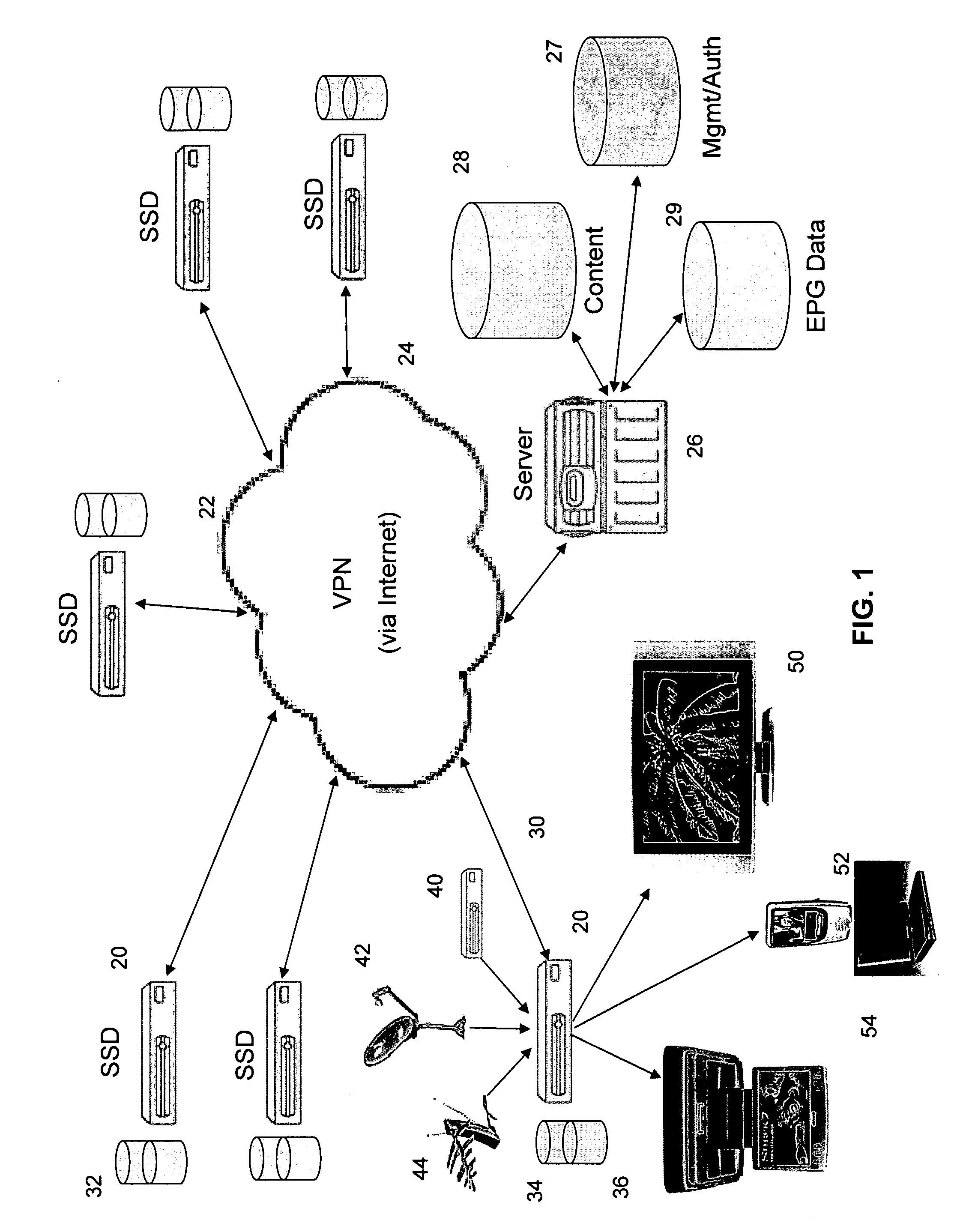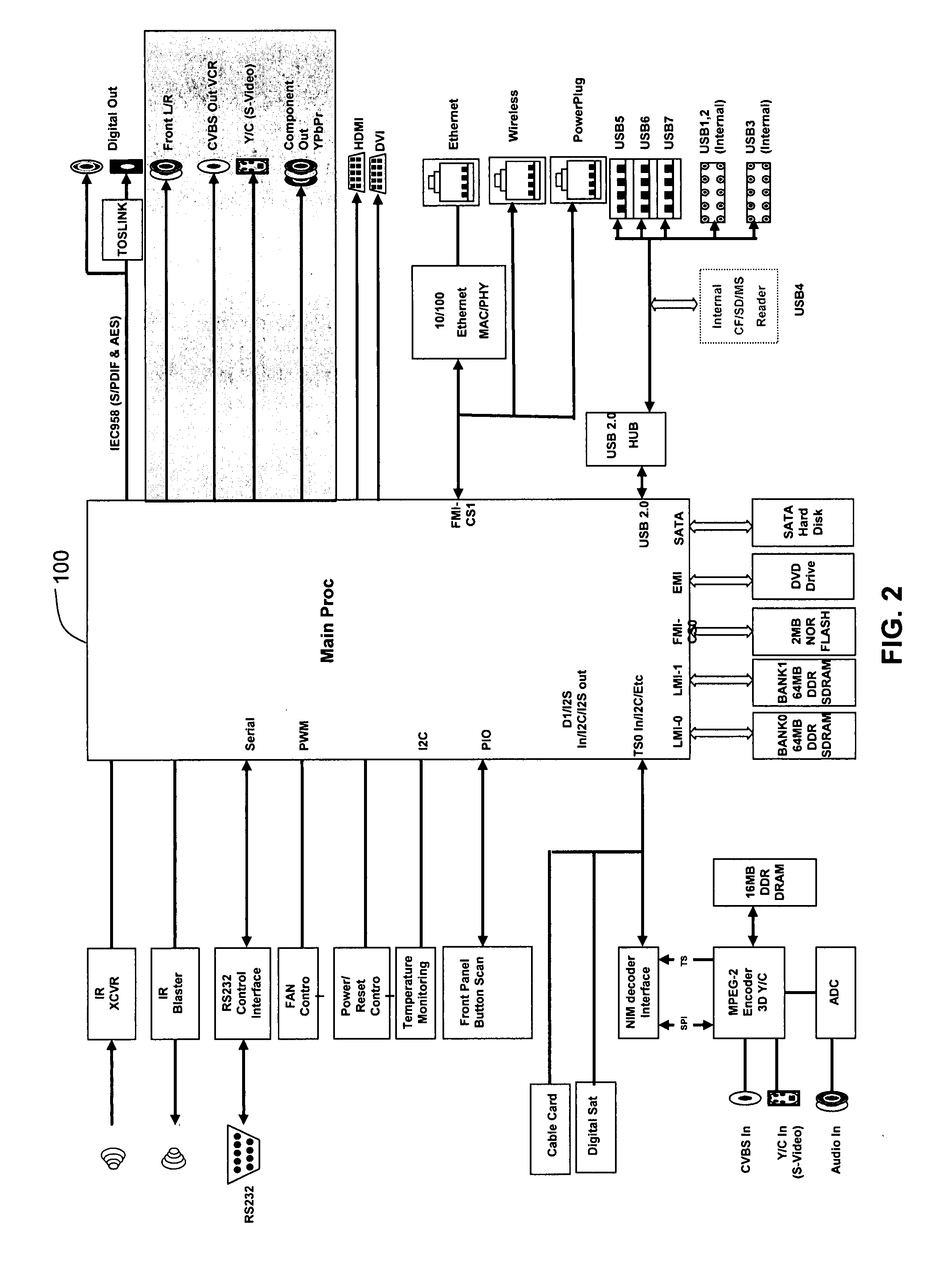Digital content delivery via virtual private network (VPN) incorporating secured set-top devices
a virtual private network and digital content technology, applied in the field of digital content delivery methods and systems, can solve the problems of delay, derailing progress toward realizing the digital content revolution, and illegal copying of digital content made available over the internet, and achieve the effect of efficient and secure distribution
- Summary
- Abstract
- Description
- Claims
- Application Information
AI Technical Summary
Benefits of technology
Problems solved by technology
Method used
Image
Examples
Embodiment Construction
[0031]FIG. 1 shows a multitude of secure set-top devices (SSDs) 20 incorporated into a virtual private network (VPN) 22 operating over the Internet 24 in accordance with one embodiment of the present invention. In addition to the SSDs 20, the VPN 22 preferably includes one or more VPN servers 26 that have access to authorized copies of digital media content files 28, such as movies, television shows, music, games, programs and other digital media. As will be described, VPN servers 26 may also have access to management and authorization databases 27 and electronic program guide (EPG) databases 29. New digital content media from third party content providers to be introduced into the network can initially be uploaded and served from the VPN servers 26 until such time as a sufficient number of authorized copies of the digital media content files 28 are stored on the multitude of SSDs 20 in the VPN 22 to enable requests for such files to be serviced using P2P file-sharing techniques, wi...
PUM
 Login to View More
Login to View More Abstract
Description
Claims
Application Information
 Login to View More
Login to View More - R&D
- Intellectual Property
- Life Sciences
- Materials
- Tech Scout
- Unparalleled Data Quality
- Higher Quality Content
- 60% Fewer Hallucinations
Browse by: Latest US Patents, China's latest patents, Technical Efficacy Thesaurus, Application Domain, Technology Topic, Popular Technical Reports.
© 2025 PatSnap. All rights reserved.Legal|Privacy policy|Modern Slavery Act Transparency Statement|Sitemap|About US| Contact US: help@patsnap.com



